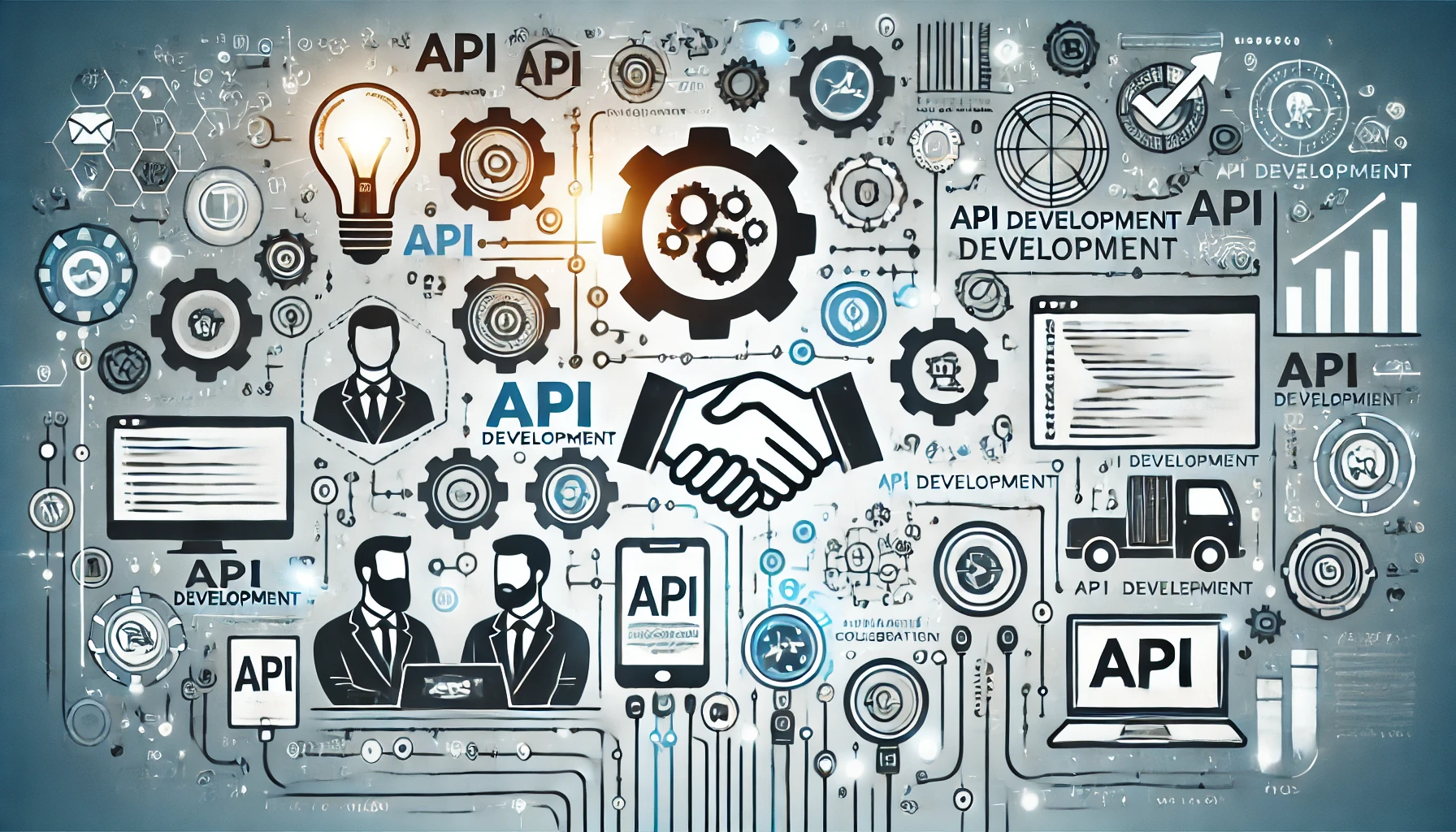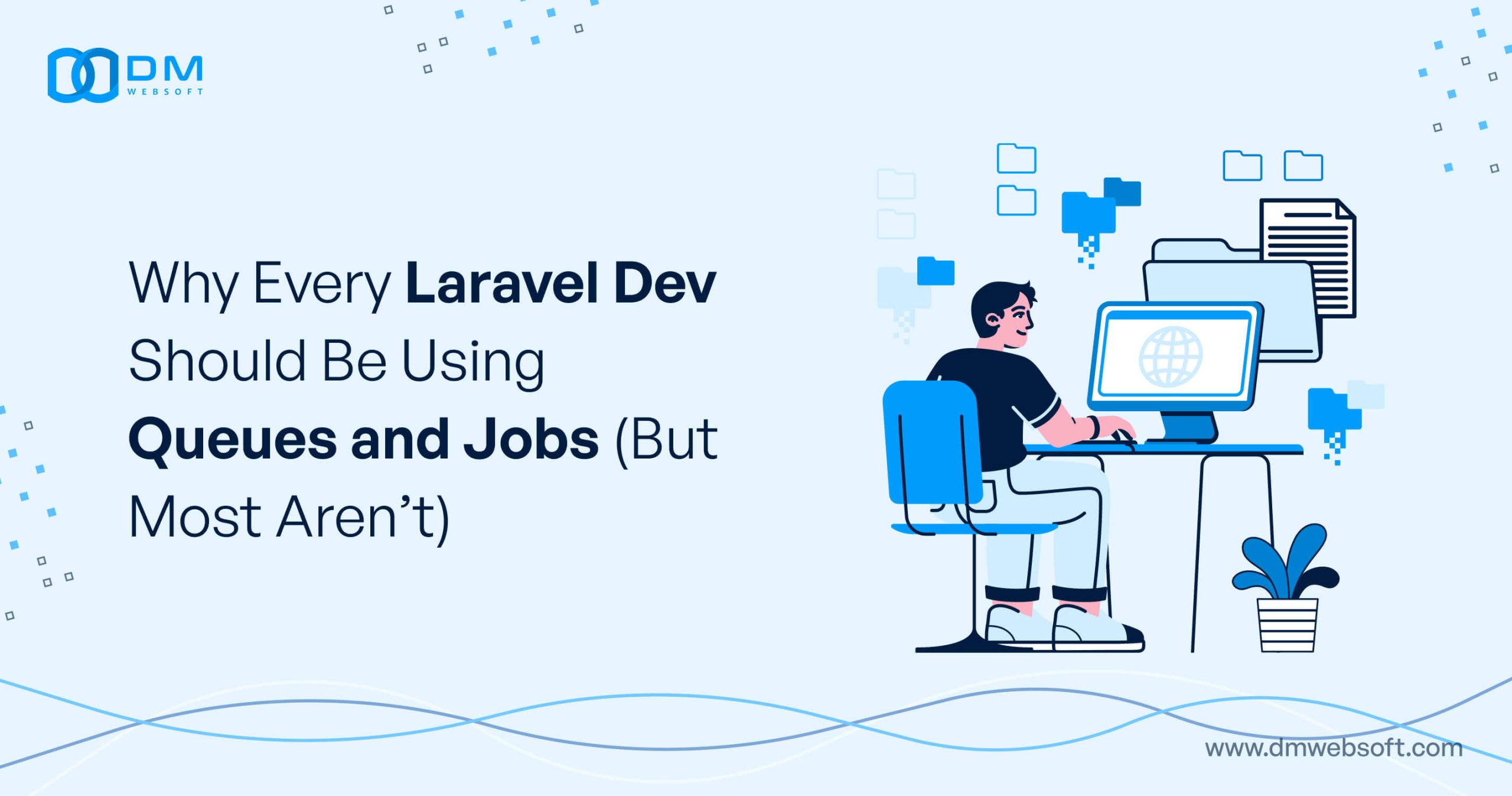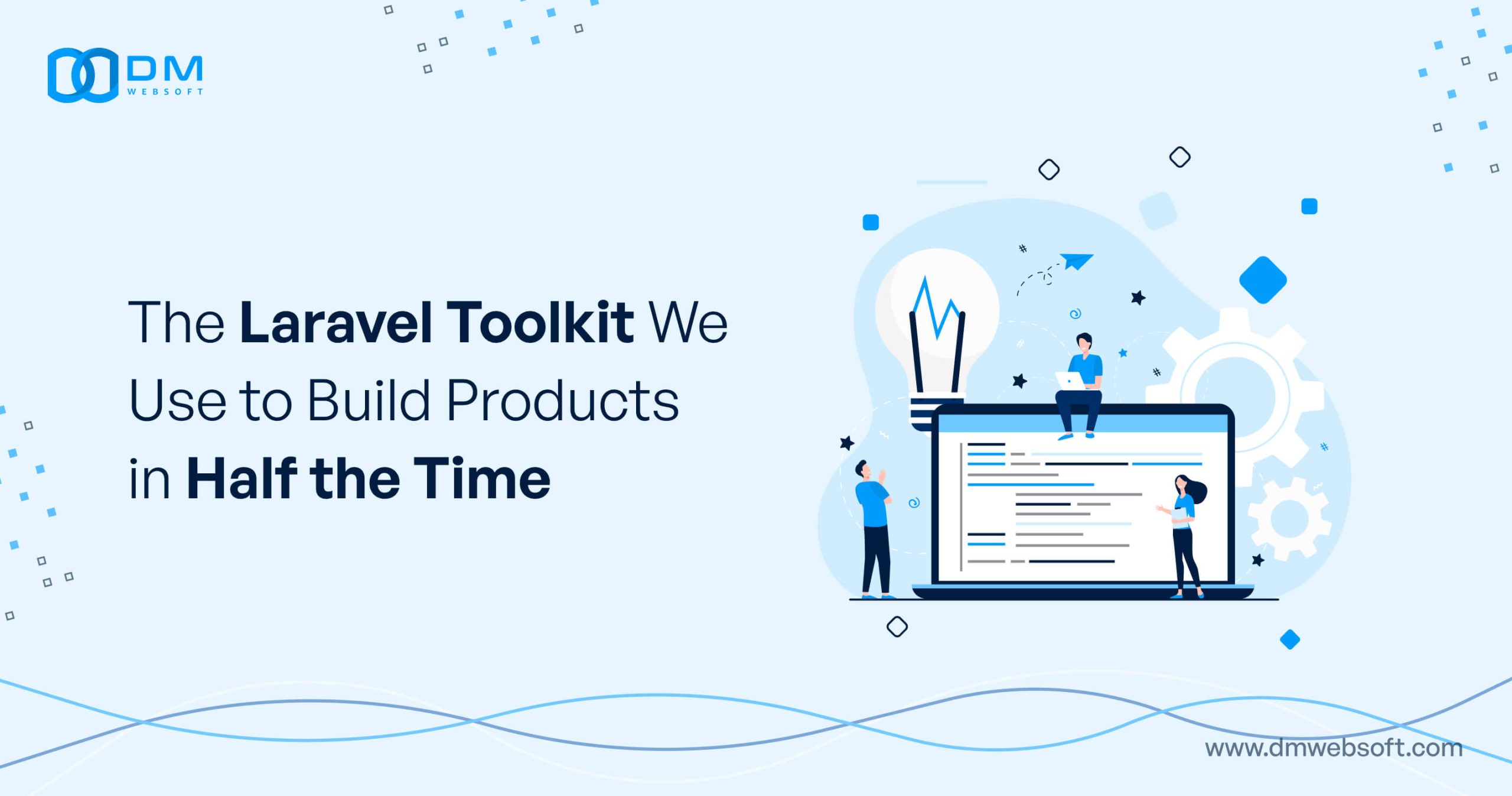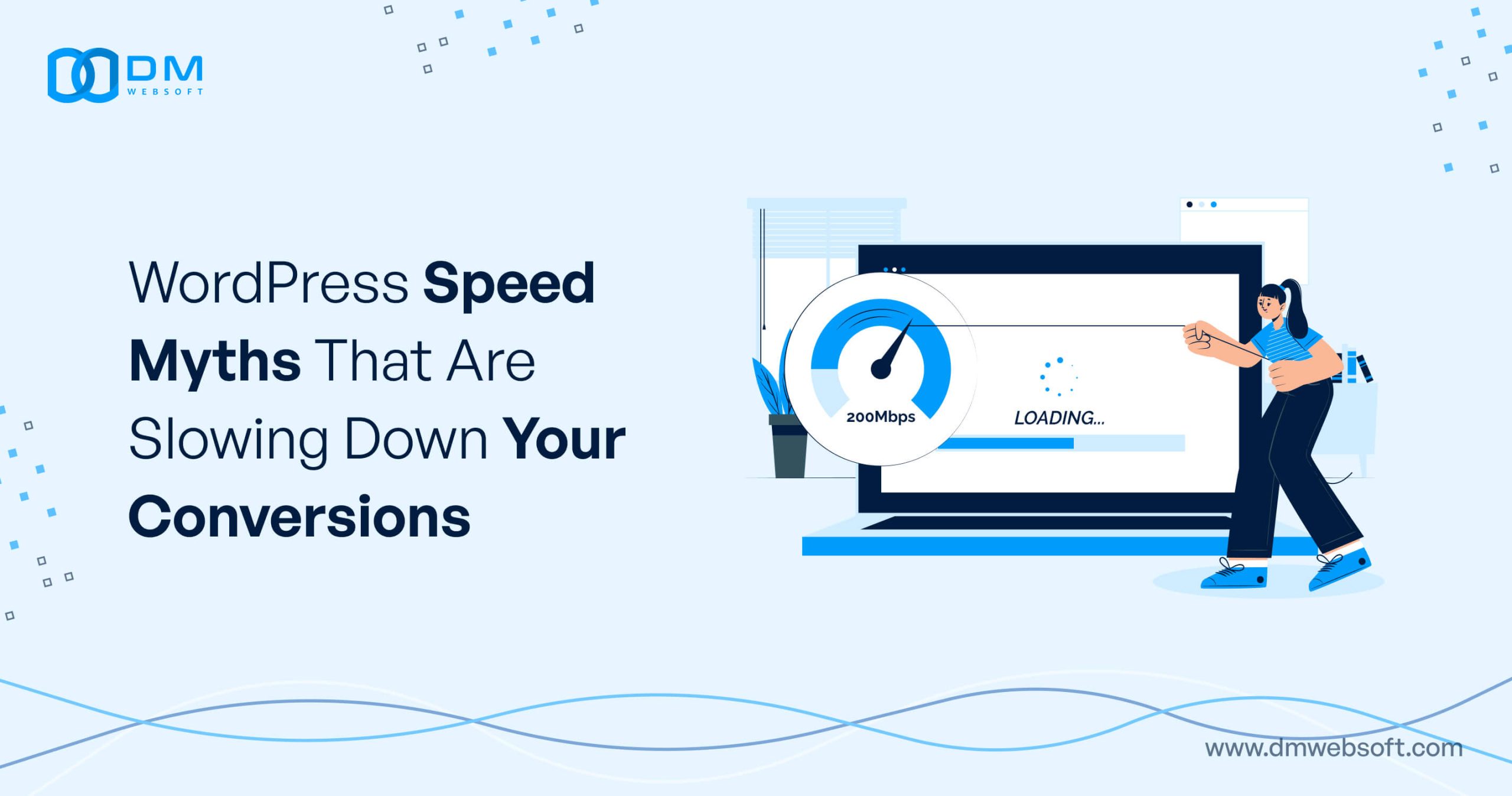DM WebSoft LLP exceeded our expectations! Their seasoned team of experts delivered a website that perfectly captures our brand essence. Their 15+ years of experience truly shine through in their exceptional web development skills.
The Future of API Design: REST, GraphQL, and Beyond
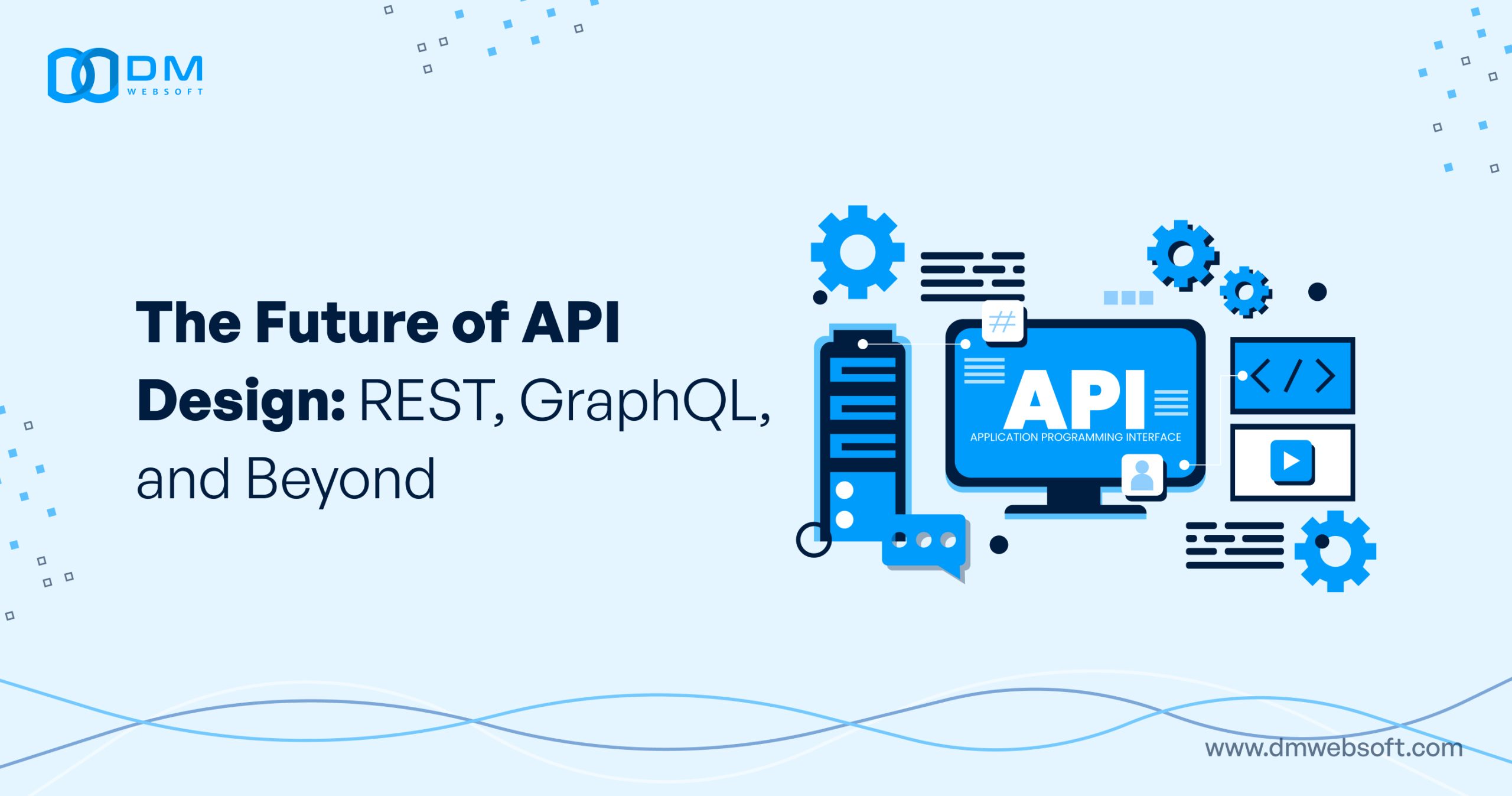
TABLE OF CONTENT
Get in Touch
Introduction
Understanding REST API
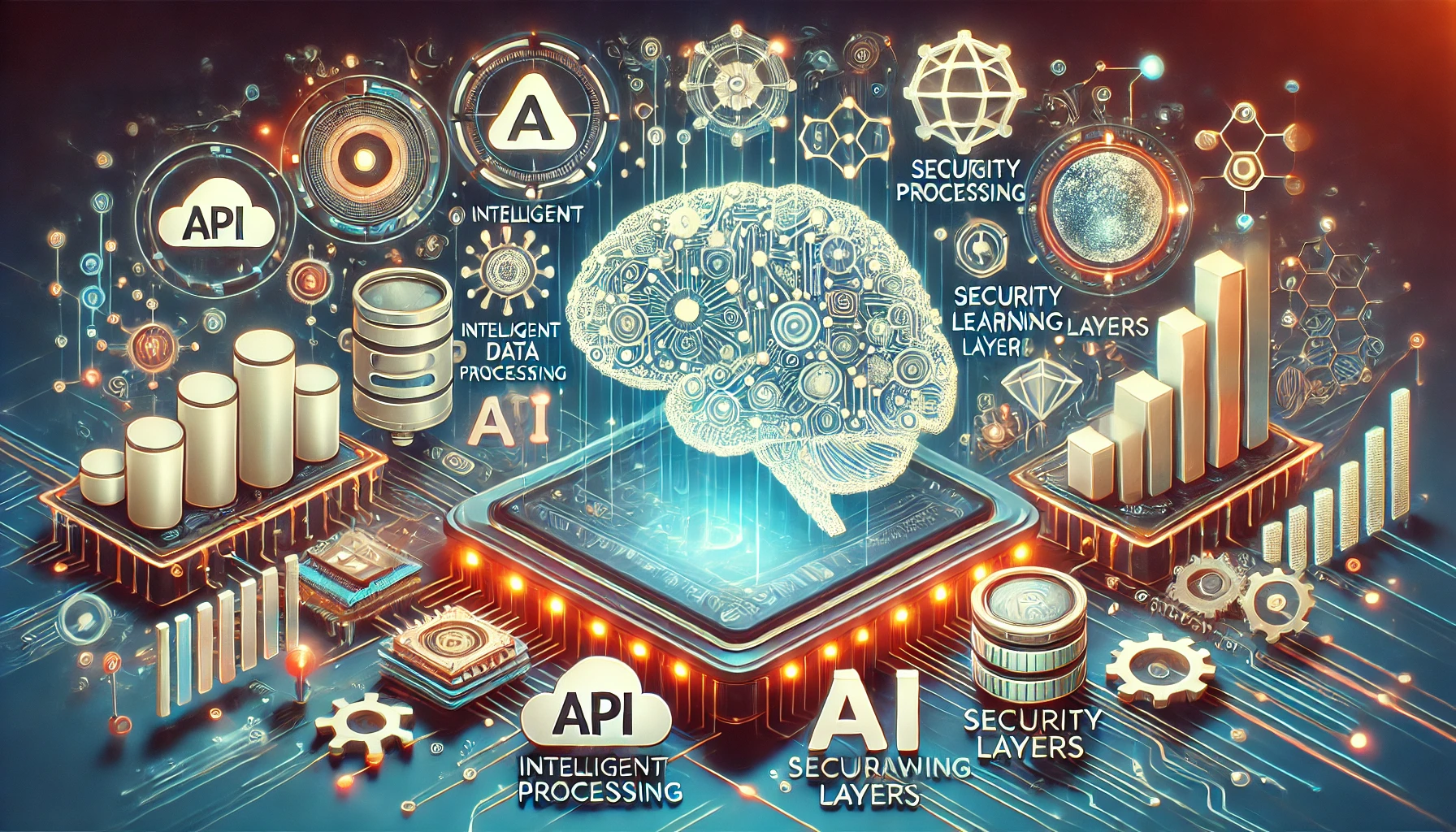
REST, Representational State Transfer, has been the solid factor in modern web API design for quite a long time. It is a set of architectural principles in developing networked applications in such a manner that these networked apps communicate over the Web. Since its advent, REST API has been established as the cornerstone in the sphere of API development, known for both simplicity and scalability.
Core Principles of REST API
- Statelessness: One of the core design principles of REST is that each request from a client to a server must contain all the information needed to understand and process that particular request. Server context is not stored between requests; this makes the design of servers simpler and more scalable since stateless architecture easily distributes requests on different servers.
- Cacheability: Responses from a REST API should clearly state if they are cacheable or not. If marked as cacheable, a client can reuse such a response without causing more requests to the server, making it effective and efficient and reducing the load on the server. This makes the entire process much faster, especially in those situations where the same data is required regularly.
- Uniform Interface: REST APIs have a set of system URLs that are easy to use, very consistent, and predictable. A uniform interface reduces the interaction complexity between client and server, thus allowing them to communicate in a standard way. This principle plays a very important role in making an API scalable and easy to use for developers to consume within their applications.
- Layered System: A RESTful API could be designed with many layers, which means separation of concerns. By creating an architectural style implementing a layered system, developers will be able to effectively add intermediaries such as load balancers, proxies, and firewalls that can help them properly manage and improve system performance without even affecting the overall client-server interaction.
- Code on Demand (Optional): REST is an optional constraint, and hence, if necessary, a server can add dynamism to the client by loading code onto a client from servers at runtime. An example of this is JavaScript. That flexibility can, in turn, allow more dynamism and response in applications but, on the other hand, can be wielded sparingly due to security and complexity concerns.
Benefits of REST API
The REST API architecture is quickly gaining popularity because it is based on the HTTP protocol. As such, it allows easy support of web technologies and is readily understandable by most developers in the field of web development. Interoperability further implies that REST APIs can be accessed from any platform that supports them, including a web browser or a mobile application.
Stateless of REST
This property of REST allows system horizontal scalability by adding servers to increase requests, not complex management of client state. It plays a very important role with the applications that expect very high traffic, e.g., social media and e-commerce sites. Besides that, developing and documenting REST APIs is quite easy, so they are really simple; thus, the learning curve for developers decreases. Uniform interface presents a predictability and simplicity of REST APIs that is favourable for faster development and integration.
Problems with REST API
Some general issues with REST API include over-fetching and under-fetching of data. Most of the time, REST endpoints return more data compared to what a client needs. This may be inefficient with network utilization. Or in other cases, this simply requires making multiple requests to gather related data. This makes the whole process slower and more complicated. One more challenge is the rigidity in REST APIs; once an API is deployed, changing its structure can be cumbersome and should be done while taking care of versioning and backward compatibility vigilantly. This further slows down the development process and sometimes hampers the ability to keep pace with the evolving business needs.
Why Choose DM WebSoft LLP for Your REST API Development
At DM WebSoft LLP, we understand the nitty-gritty of developing REST APIs and strive toward building a very strong, effective solution with respect to the business needs. Our developers have great skills in implementing REST APIs with modern best practices, which are giving you the real edge in terms of performance, security, and scalability. Whether you are developing a new application or enhancing an existing system, DM WebSoft LLP will work with you and create customized API solutions for your business. We care about quality, meaning your API infrastructure is unbreakable and resilient in the face of the modern digital landscape.
Exploring GraphQL API
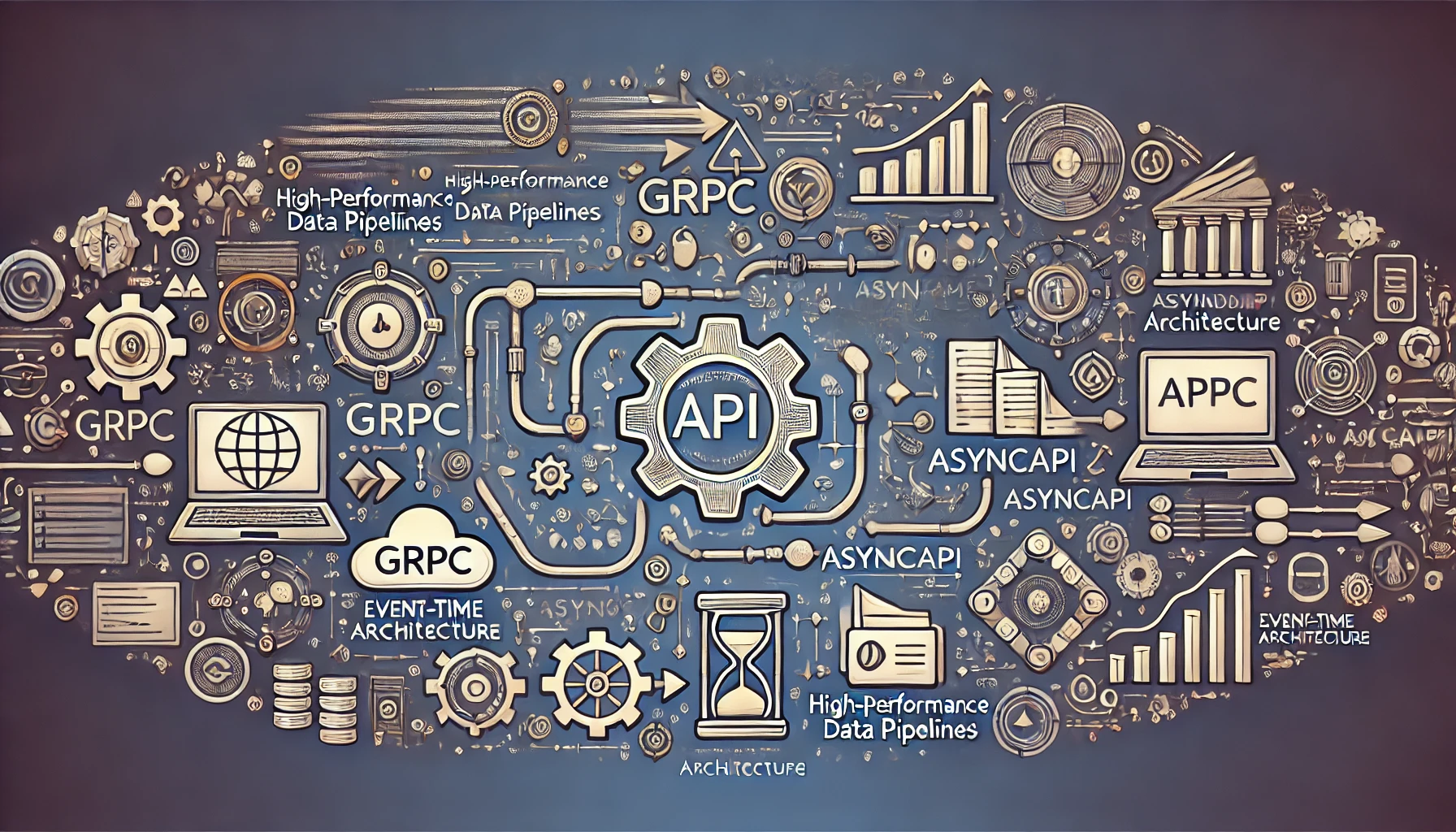
In a world of increased demand for more effective and flexible data fetching techniques, GraphQL appeared as a worthy alternative to a traditional REST API. Born in Facebook’s labs back in 2012, it has redefined how developers use APIs by providing them with a smarter and more effective way to query data.
Introduction to GraphQL
GraphQL is a query language for APIs, which enables clients to request only data that is necessary. A very important difference between REST and GraphQL is that in REST, the server defines the structure of the response, while with GraphQL, clients describe just what they want and the server responds with exactly that structure—nothing else, nothing more. This allows a precise and efficient mechanism to fetch data, especially useful for modern applications that work with highly dynamic data that should be updated in real time.
Key Features of GraphQL
- Flexible Queries: One of the striking features of GraphQL is its nature of allowing the clients to define their own queries. Clients may ask for exactly the resources they need and no more; this could be many resources for a single request. In other words, this significantly reduces the number of network requests, and clients can load the available network bandwidth.
- Strong typing: GraphQL uses a very powerful type system to define the capabilities of an API. The Schema serves as the contract between the client and the server, which guarantees that expected queries are validated and predictable. The type system is explicit in the API, which is helpful for documentation and error handling.
- Real-time Data: GraphQL supports real-time data updates using subscriptions; this enables clients to get immediate notifications whenever there are changes in the data. This is essential for live applications—for example, feeds from social media or chats and other collaborative tools.
- Single Endpoint: Unlike in REST, where we have multiple endpoints for multiple resources, a single endpoint in GraphQL is being utilized to serve all requests. So this makes the API management easy and less complex for client-server transactions.
Advantages of GraphQL Over REST
Many problems that the RESTful API had are solved in GraphQL. By enabling clients to request only what data is needed, GraphQL also reduces over-fetching and under-fetching, thus being more network resource-effective. This becomes more important for mobile apps and low-bandwidth environments to keep the amount of data being transferred to the bare minimum for better performance. Moreover, the flexibility of its query language allows much iteration on app development. The API can be modified without any effect on existing queries, limiting the problems associated with version control and backward compatibility.
Challenges with GraphQL
Even though GraphQL has many advantages, it comes with a list of challenges:. A GraphQL server setup could involve a more complex implementation compared to a REST API, which just involves writing endpoints. It further involves much thought and caring for the schema and query execution logic involved. Also, the dynamic nature of GraphQL queries may complicate traditional caching strategies, leading developers to land on sophisticated caching solutions that are optimally efficient. Security is another issue with GraphQL because of the dynamism of queries capable of opening up one to problems if not managed well. Strong authentication and authorization mechanisms guarantee that there is no unauthorized access and data integrity.
Why Choose DM WebSoft LLP for Your GraphQL Development?
In DM WebSoft LLP, we have developed and designed a wide range of GraphQL APIs, where we always intended to provide scalable, effective solutions that are business needs. We are experts in crafting flexible, performance-sensitive GraphQL schemes which are secure and reliable. Whether it is migrating from REST to GraphQL or creating new applications in which the core is nothing other than GraphQL, DM WebSoft LLP has the right skills and experience to be your reliable partner in this delivery of success. Innovation and excellence remain the driving forces behind the effort to ensure the API infrastructure is armed and ready to take on today’s challenges in the ever-changing digital world.
Principles of API Architecture and Design
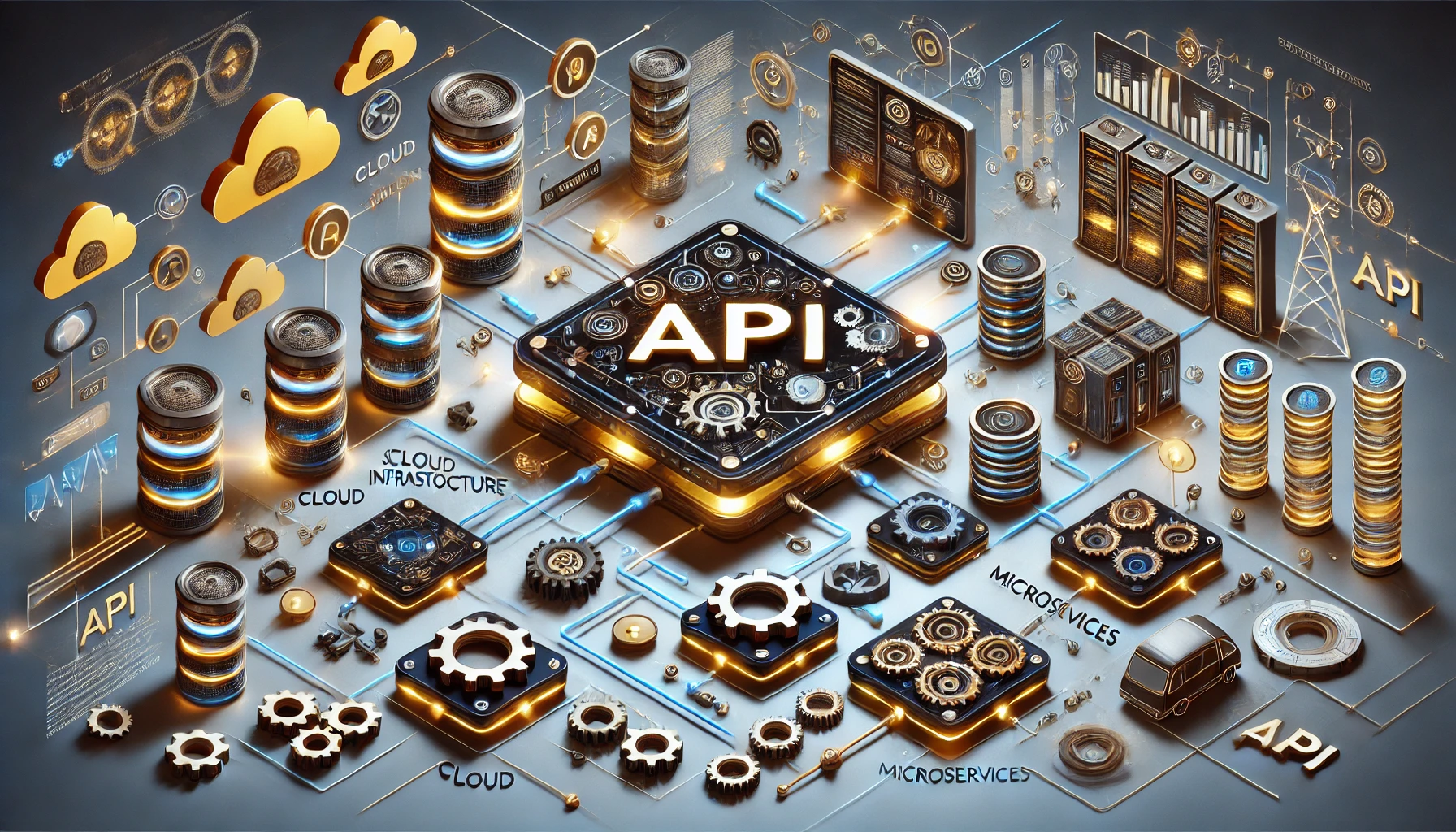
Building systems in today’s software development world that are scalable, efficient, and maintainable requires a solid foundation in the architecture of good APIs and design principles. At present, when APIs have become the prime factor for modern applications to achieve excellence in delivering digital experiences, the need to understand these principles is on the rise.
Design Principles for Good APIs
- Scalability: The APIs should be geared to cater to incrementally increasing loads and traffic without performance compromise. This can be achieved through implementation of techniques such as load balancing, horizontal scaling, and efficient resource management. An API designed with scalability in mind always ensures that it will grow in step with the applications it is supporting.
- Efficiency: It should necessarily use resources efficiently and enhance performance. This includes data retrieval, processing optimization, reducing latency, and responding very quickly to requests, among others. Techniques like caching, batching of requests, or keeping payload sizes at a minimum drastically increase the overall performance.
- Security: Since an API is exposed to sensitive data and function, it’s better to establish concrete mechanisms in authentication and authorization—such as OAuth and JWT—to guard against unauthorized access to APIs. Other supplementary measures will involve the encryption and regular checking of data security for integrity and confidentiality.
- Modularity: APIs should be modularly designed to provide systems with the properties just mentioned: flexibility and adaptability. This can be realized by breaking functionalities into small reusable pieces that further will be easy to maintain and extend if necessary. Such an approach shall also make integration of services and running on any other platforms an ease.
- Versioning: The API should allow changes and enhancements without breaking existing clients. There is always the assurance of backward compatibility with versioning practices, thus providing a lucid way for its users to upgrade. Developers can introduce new features that catch up with legacy systems.
- Consistency: The API is said to be consistent in nature if it follows conventions and standards, staying quite easy to use and understand. This very much extends from standardized naming conventions to formats of responses and goes all the way to the handling of errors. This goes further to reduce the learning curve that developers have to go through, actually improving the user experience of a product.
- REST vs. GraphQL API Architectures: REST and GraphQL each have individual architectures with different attributes and trade-offs. Knowing the difference between these two and their proper application is what will help you make a decision about the right fit for your business.
- REST API Architecture: REST is a resource-based architectural style where each endpoint has an alignment to some kind of resource. That architectural style is simple, very clear, and intuitive so easily comprehensible and implementable. However, fixed endpoints REST can bring over-fetch and under-fetch of data, whereas one might need more than one request for fetching related information.
- Architecture of the GraphQL API: GraphQL is more flexible as it enables the querying of multiple resources by a client in a single request. The use of its single-endpoint architecture reduces complexities in client-server interaction, thus decreasing network overhead. The dynamic nature of GraphQL queries allows developers to build more responsive and efficient applications, especially when it comes to dealing with data structures of a more complex nature.
- Importance of Selecting the Right API Design: The selection of the right API design is very critical to serve business objectives and ensure success in the long run.
Factors to consider when you want to choose an API design:
- Data requirements: Check whether the data requirements of your application are well-suited to a resource-oriented REST API, or perhaps a better fit would be using a GraphQL API with its flexible data querying.
- Scalability: Compare the scalability needs, and therefore, choose an architecture that suits an expected load and growth.
- Integration Needs: Consider how easily it integrates with existing systems and platforms and its capability for future expansion.
- Development Resources: Check out the available development resources and the required skills, as some API designs might need very professional skills and tools.
Why Choose DM WebSoft LLP for Your API Design? At DM WebSoft LLP, we excel in the creation and implementation of API architecture to meet the unique needs of our clients. With an experienced team of developers, we can cater for solutions that effectively bring out the best in REST and GraphQL, delivering optimal performance, security, and scalability.
Our business approach is anchored in our passion to guarantee that high-quality API solutions from us will enable you to confidently apply our competence to drive digital innovation and efficiency for your own business. Whether it is the development of a new application or the enhancement of an existing system, DM WebSoft LLP has the required skills and knowledge to see the implementations through.
Emerging API Technologies
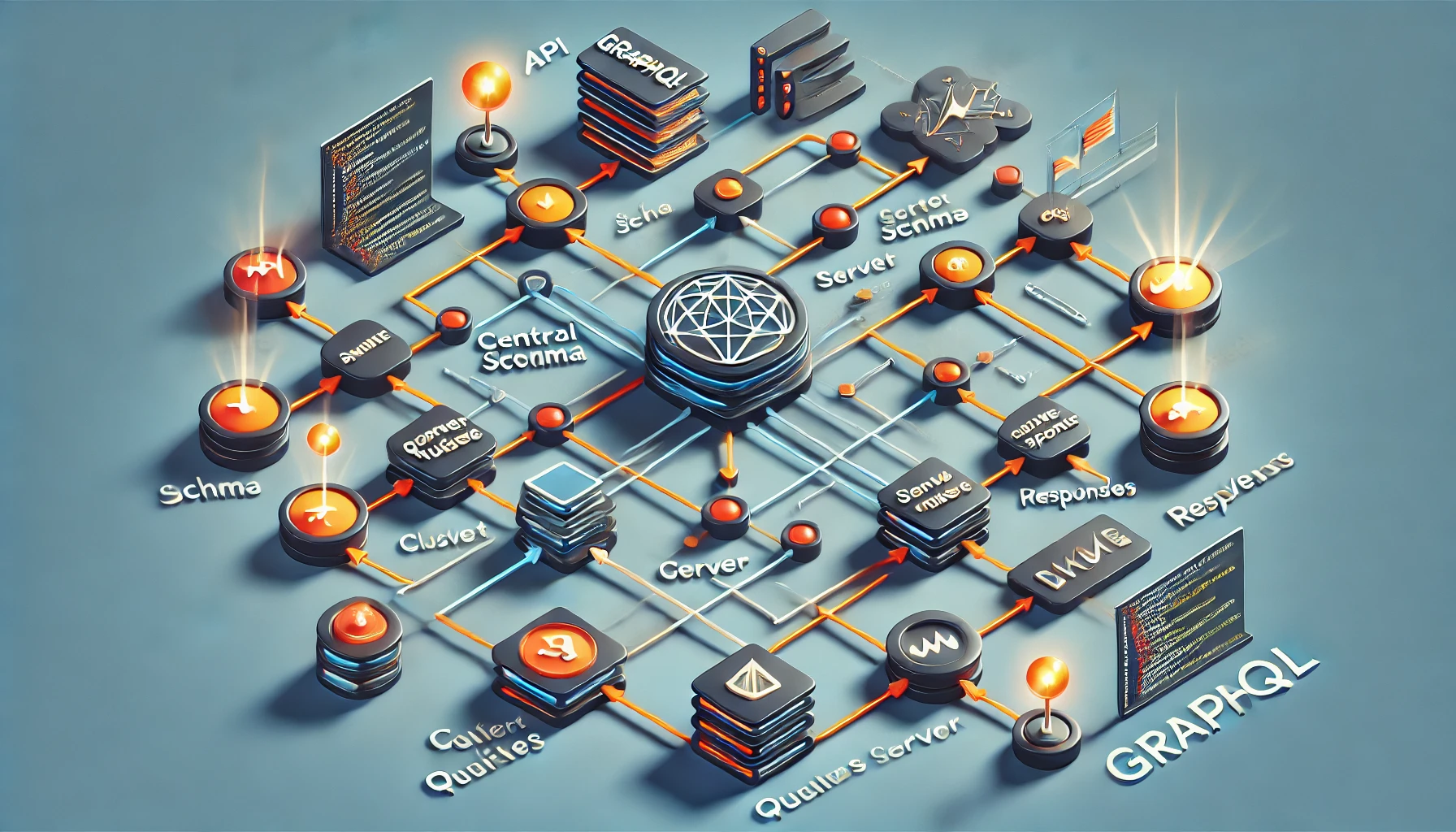
With the advancement of technology, emerging API technologies aim to address the limitations of conventional paradigms like REST and GraphQL. These innovations are creating ways for more efficient, scalable, and real-time data exchange solutions, thus changing the way developers build and interact with APIs.
gRPC: A High-Performance RPC Framework
gRPC is a free, open-source remote procedure call framework initiated by Google for high-performance communication between different distributed systems. It uses HTTP/2 as the transport and Protocol Buffers as the interface definition language, which means it is quite efficient for data serialization.
Key Features of gRPC
- Binary Serialization: gRPC uses Protocol Buffers, a mechanism that is language- and platform-neutral, and is easily extendable to serialize structured data. Binary serialization shrinks the size of data payloads, which improves performance and reduces latency.
- Multiplexing and Flow Control: The support for multiplexing and flow control in HTTP/2 is further extended in gRPC; it handles multiple requests on the same connection at the same time. This again increases throughput and cuts down on latency, which is good for heavy or high-performance applications.
- Language-independent: gRPC can be made available to a very large number of languages, including C++, Java, Python, Go, and many others, putting the developer in their own comfort zone in terms of languages and toolsets but still letting them develop on every platform.
- Streaming support: gRPC supports client-streaming, server-streaming, and bidirectional streaming, enabling the efficiency needed for data exchange in real-time applications like video conferencing and IoT.
- Advantages of gRPC: In general, the gRPC architecture is efficient and performs well in applications where low latency and high throughput are required. It supports streaming and multiplexing, allowing developers to make robust and scalable systems capable of handling big volumes of data. The strong typing and contract-driven nature of Protocol Buffers guarantee reliable communication between services.
AsyncAPI Definition of Asynchronous APIs
An event-driven architecture is an architectural design derived from APIs that concern themselves mainly with the definition of the latter. More specifically, services are defined by events and the ways of event-driven communication between services to meet up with different demands regarding the high-performance software. On one side, this describes and documents event-driven systems in a standard way, aiding simplicity in developing and maintaining scalable, available apps.
Core Features of AsyncAPI
- Event-Driven Communication: AsyncAPI supports async communication in a service-oriented system whereby services need to operate independently and respond to events in real time. This architecture is perfectly suitable for microservices, IoT, and real-time applications where key factors include responsiveness and scalability.
- Schema Definition: Similar to OpenAPI for RESTful APIs, AsyncAPI allows definition of the schema of event-driven APIs to bring consistency and clarity across the system. The schema is nothing but a contract between services so that there can be a smooth integration with less time spent on development.
- Tooling and Integration: AsyncAPI equips developers with tools and libraries required for development, testing, and documentation. This makes it pretty straightforward for developers to institute and maintain their event-driven systems. These tools automate things like code generation and validation, monitoring and instrumentation, etc.
Benefits of AsyncAPI
The AsyncAPI specification greatly eases the designing of event-driven systems, thereby ensuring that its structure for communication and integration is clear and transparent. This is interesting because of the asynchrony it allows in interactions, making applications both flexible and responsive to dynamic workloads and complex workflows.
Role of APIs in Enabling Microservices and IoT
As business enables more and more microservices-based and IoT solutions, the need for effective API technologies grows. Both gRPC and AsyncAPI work well in these sorts of environments with tools and capabilities to help developers build scalable and resilient systems. APIs between microservices must support communication and interactions smoothly and performantly. It is this balance that makes gRPC right for strong typing with highly efficient data exchange, along with the asynchronous nature of AsyncAPI.
IoT: In IoT applications where the devices have to communicate in real time, the low latency and high throughput of gRPC make it the best fit. In that respect, the event-driven model that AsyncAPI works with is perfect for IoT use cases, where things can act on events and fire actions on-the-fly.
Why Choose DM WebSoft LLP for Your API Solutions?
DM WebSoft LLP is at the forefront of API innovation, bringing in expertise with emergent technologies such as gRPC and AsyncAPI. Our experienced developers are dedicated to providing solutions of elevated performance, scalability, and reliability, which keep your business far ahead of the curve. Whether you’re building a microservices architecture or developing IoT applications, DM WebSoft LLP has the knowledge and expertise to craft forward-thinking API solutions around your needs. Our commitment to excellence implies that your API infrastructure can handle anything that the dynamic, digital world throws at it today.
Conclusion
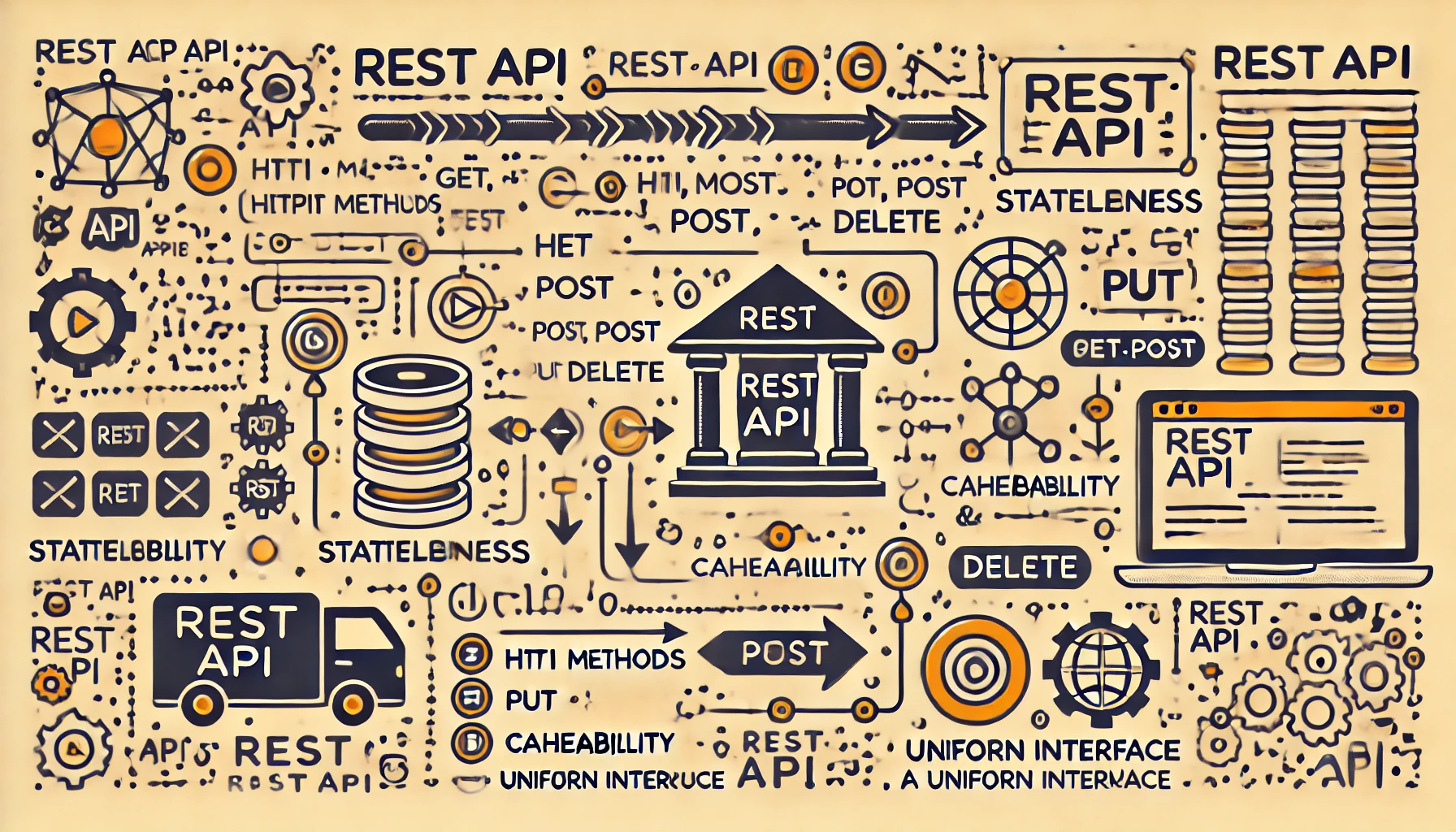
In the quickly growing digital world, API design and its implementation have become integral to modern software development. It doesn’t matter whether it is the proven best practices in RESTful APIs, or the flexible querying capability offered by GraphQL, or even the new technologies in town like gRPC and AsyncAPI; the future possibilities for API design really light up the world of business stakeholders, developers, and consumers. As we have discussed, each of the API architectures has various strengths and trade-offs, and your design will have to be right for what you want to achieve in business. Learning the core tenets and trends that shape the future of APIs becomes necessary in providing a stimulus for innovation and competitive advantage with issues that could be affecting scaling, efficacy, or real-time data handling.
In reality, APIs are much more powerful tools for making systems connections; they are the leading force behind digital transformation. Seamless communication and integration unleash operational efficiency to leverage user experiences and unlock new revenue streams. In a fast-evolving technology landscape, API is gaining importance, and this calls for investments from organizations on API strategies.
At DM WebSoft LLP, we are resolute in shepherding our clients through the maze of API development within complex and dynamically shifting technology landscapes to make realizable business strategies. Our expert team is dedicated to the delivery of bespoke solutions aimed at enhancing performance, security, and scalability, hence making your API infrastructure future-proofed for the challenges and opportunities that lie ahead. Regardless of whether you’re looking to build new APIs, integrate existing systems, or explore innovative solutions, DM WebSoft LLP has the experience and support to see you through. Talk to us today about how our complete API service can change the way you do business and position you for success in the new digital era.
Are you ready to leverage your API strategy to harness the future? Contact DM WebSoft LLP today for a consultation. Contact the experienced professionals at DM WebSoft LLP to open up possibilities within your APIs and take your business to the next level. Let us be your trusted partner in attaining digital excellence and innovation.
REST APIs use fixed endpoints and return complete data objects, while GraphQL APIs allow clients to request specific data fields, providing more flexibility and efficiency.
API security is crucial because APIs expose data and services to the outside world, making them potential targets for cyberattacks. Implementing robust security measures protects sensitive information and maintains trust.
gRPC uses binary serialization and HTTP/2 for efficient data exchange, reducing latency and improving throughput, making it ideal for high-performance applications.
AsyncAPI standardizes asynchronous communication, enabling services to react to events in real-time, which is essential for microservices, IoT, and dynamic applications.
DM WebSoft LLP offers comprehensive API development services, including design, integration, security, and management, tailored to meet your business needs and drive innovation.
Get Started Now !
What’s the Process ?
Request a Call
Consultation Meeting
Crafting a Tailored Proposal
Get Started Now !
Real Stories, Real Results. Discover What Our Clients Say

Working with DM WebSoft LLP was a game-changer for our business. Their technical prowess and innovative solutions transformed our online presence. A highly recommended web development agency with a stellar track record.

We are thrilled with the results DM WebSoft LLP delivered. Their deep understanding of web development coupled with years of expertise ensured a seamless and visually stunning website. True professionals!

In a digital age where first impressions matter, DM WebSoft LLP crafted a website that speaks volumes. The team’s attention to detail and commitment to quality set them apart. Thank you for making our vision a reality.

DM WebSoft LLP’s team demonstrated unparalleled expertise. Their ability to navigate complex technical challenges with ease is truly commendable. Choosing them for our web development needs was the best decision.

Exceptional service, unmatched skills! DM WebSoft LLP stands out as a leading web development agency. Their collaborative approach and commitment to excellence make them our go-to partner for all things web-related.

DM WebSoft LLP turned our ideas into a digital masterpiece. The seamless communication and timely delivery of our project showcased their professionalism. Highly impressed with the level of creativity and skill.

Our experience with DM WebSoft LLP was nothing short of amazing. From concept to execution, their team provided top-notch web development services. A reliable partner for businesses looking to elevate their online presence.

DM WebSoft LLP’s team of tech experts is second to none. Their wealth of experience reflects in the quality of their work. Our website not only meets but exceeds industry standards, thanks to their dedication.

Choosing DM WebSoft LLP was the best investment for our web development needs. Their team’s proficiency, coupled with a customer-centric approach, made the entire process smooth and enjoyable. A pleasure to work with!

